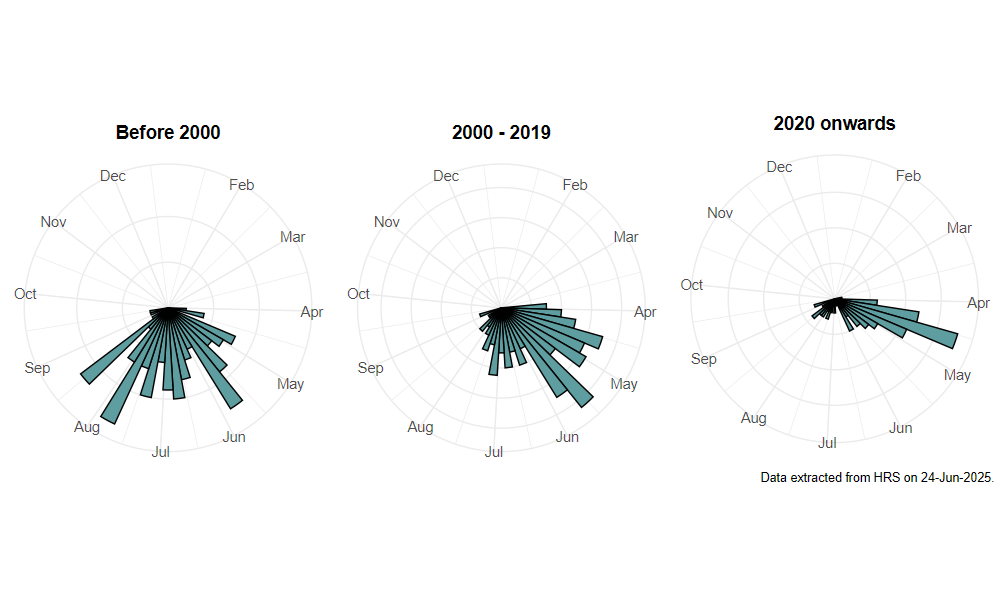Neoascia interrupta (Meigen, 1822)
Identification
Identification difficulty = 3. ![]()
![]() according to Ball & Morris, 20241
according to Ball & Morris, 20241
Biology
The larvae of this genus are associated with rotting vegetation and many are wholly aquatic. Field observations suggest that an association with Greater Reedmace Typha latifolia is possible, but the evidence is circumstantial. It would appear to be tolerant of brackish conditions and occurs extensively across the grazing marshes of the Thames estuary.
Flight period
The following plots show the number of unique records per week excluding those reported to be of immature stages.

Status
Lower Risk (Nationally scarce) - Ball & Morris, 20142. Notable - Falk, 19913.
Distribution
This species is almost entirely confined to eastern England as far north as South Yorkshire and west to Warwickshire and Oxfordshire. There are, however, reliable records from North Wales in 1987 and from Leighton Moss in 2008.

Trends
The following plots show the Frescalo TFactor vs year and a map of the rescaled frequency (all records) for the species.
-
Ball, S., & Morris, R. (2024). Hoverflies of Britain and Ireland. WILDGuides (3rd ed.). Oxford: Princeton University Press. ↩
-
Ball, S., & Morris, R. (2014). A review of the scarce and threatened flies of Great Britain. Part 6: Syrphidae. ( No. 9). Species status (pp. 1–130). Peterborough: JNCC. ↩
-
Falk, S. (1991). A review of the scarce and threatened flies of Great Britain. ( No. 39). Research and Survey in Nature Conservation (pp. 1–194). Peterborough: NCC. ↩